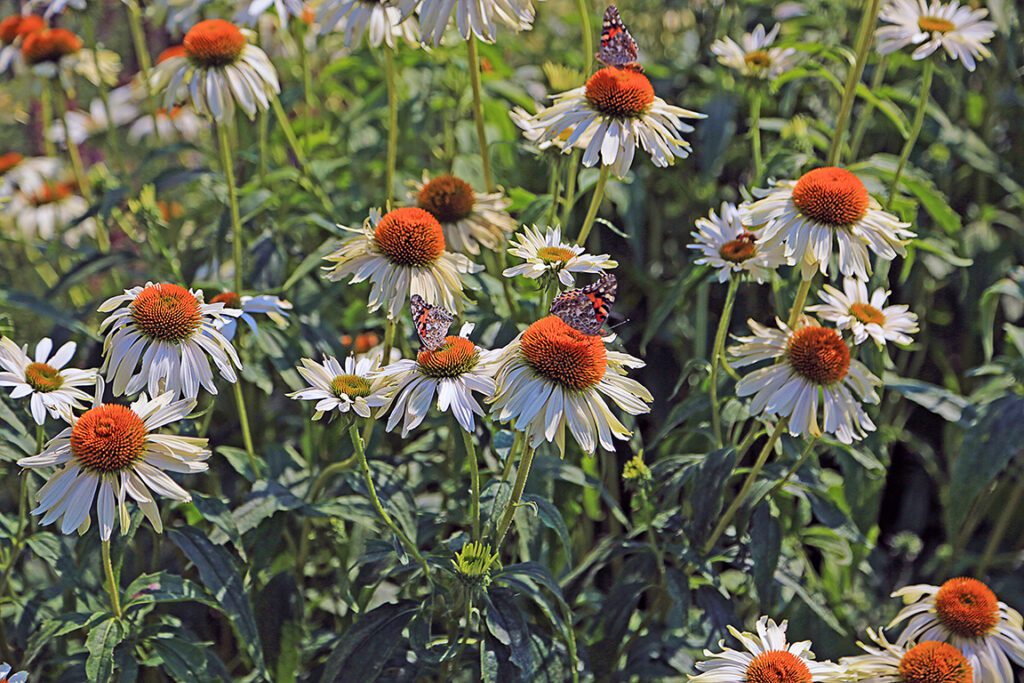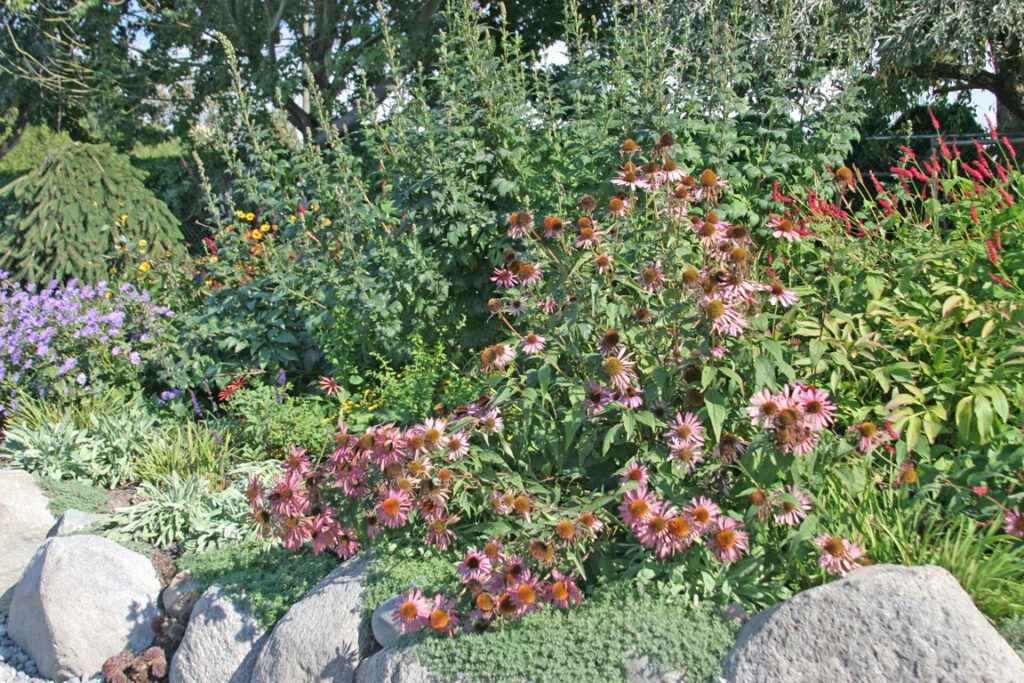Planting and Caring For Echinacea (coneflower)
Planting and Caring For Echinacea (coneflower)
Looking for a perennial that blooms in mid-summer, is good for cutting and attracts butterflies as well? You need Echinacea, aka coneflower. Never have gardeners had a better selection of this native perennial than now. You can not only plant the traditional purple coneflowers (which are really more pink than purple) but there are several new flower colors as well. Here are some tips for growing Echinacea and photos that show where to clip off flowers that are going by.

- Plant Echinacea in full sun. Choose a spot that gets at least five hours of dead-on sunlight including the noon hour.
- Coneflowers like good drainage. Plant them in organically amended sandy soil, or good garden loam in a location that doesn’t get flooded. These perennials don’t like to have “wet feet” in the winter.
- These perennials can be strengthened the first year of planting by deadheading them in late-August and not allowing them to come into flower later in the fall. Enjoy your newly planted Echinacea flowers all summer and then clip off all flowers at the end of August. If the plant starts to form new buds in September clip these off before they open. Leave the plant in place all fall – don’t cut it down in your fall cleanup. Given this treatment the first season your plants will build a strong root system that will promote hardy, robust growth for years to come. After the first year you can allow the plant to flower in the fall.
- In general, keep Echinacea on a lean diet – fertilize once in the spring with an organic fertilizer.
- When the first flowers start to fade in late-July or early August start clipping off the older flowers just above the foliage further down the stem. See the photo below. This will stimulate new blooms. An alternative to clipping off individual stems as the flowers fade is to cut the entire plant back by about half. This is faster but the plant will look “hacked” for a period before it recovers.

Posted in Perennials
6 Comments
Leave a Comment
Subscribe To Our Newsletter
Sign up for our weekly email about sales and events.

If I wanted to upload some pics of some of my own Coneflower and other blooms bought over the years at Country gardens is there a way to do that in a message here, or just send an email with an attachment. or do not really want to encourage that sort of thing?
Cheers, jeff hansen
Jeff – we LOVE photos from our customers’ gardens! If you send them as an attachment either to the store email ([email protected]) or to Nan ([email protected]) we’ll post them either on this blog and/or our Facebook page. We’ll credit you as the photographer and the gardener of course.
I’m a very frustrated newbie gardener and this is the most concise info I’ve run across on caring for coneflowers. (I love them! Thankfully I haven’t managed to kill mine but they’re not thriving either. ) Thanks so much for taking the time to post it, especially with the pictures! I’m going to explore your entire site and see what else I can learn.
I’m glad you liked it and find this information useful, Kelly. Keep gardening!
Trying to search why the coneflower bends over like it is in desperate need of a drink (which it had plenty of water)? I am assuming that it is a heat defense but not sure. Can you shed some light on this? Thanks
Some coneflowers are just naturally floppy – a matter of genetics. They can also flop if grown in too rich an environment – too fertile and too much water. Finally, they will flop if they are not in at least 6 to 8 hours of dead-on sun including the noon hour…Echinacea grown in part shade stretches, looking for more light. So any one or more of these issues might be your problem.